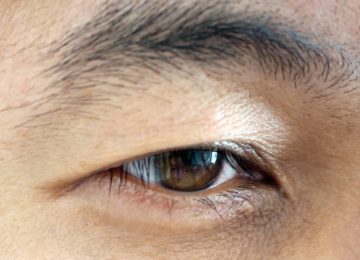Thyroid disease is becoming more common every day. It affects millions of people, presenting a higher incidence in the female population. In this regard, Dr. Bedini Iván , a specialist in Head and Neck Surgery , provides information on its function in the body, how to detect the anomaly, making the diagnosis and the treatment it entails.
What is the Thyroid Gland and what is its Function?
The Thyroid is a gland of endocrine secretion, located at the base of the neck, in front of the trachea. It is shaped like a butterfly. It is made up of two lobes, right and left, joined by an isthmus.
The purpose of the thyroid gland is: to produce, store and release hormones. Which are also known as T3 (Triiodothyronine) and T4 (Thyroxine). They affect almost every cell in the body and help control their functions. The amount of thyroid hormone produced is controlled by another gland in the brain, called the Pituitary or Hypophysis Gland. Another part of the brain, the Hypothalamus, sends information to the pituitary gland, which in turn controls the Thyroid gland.
Therefore, the Thyroid, Pituitary, and Hypothalamus glands work together to control the amount of thyroid hormone in your body.
When is a Thyroid Gland abnormal?
Thyroid disease is very common and affects millions of people, with a higher incidence in women. The most common pathologies are:
Increased glandular activity: Hyperthyroidism , or decreased: Hypothyroidism .
The gland increases in size due to less activity, as is the case with hypothyroidism, or due to excessive activity, such as hyperthyroidism or Graves’ disease. An enlargement of the thyroid gland is called a “Goiter”.
Patients may develop calluses or masses on their gland, which can be benign or malignant. These masses or nodules must be studied early, depending on their size, to arrive at a diagnosis and plan the appropriate therapy.
How is the diagnosis made?
The diagnosis of a Thyroid mass is made by:
- A good medical history.
- Bimanual or mono manual palpation of the gland. Your doctor may ask you to lift your chin by extending your neck and then swallowing so that a thyroid mass can be distinguished from other masses or lumps in the neck.
- A laboratory to evaluate Thyroid function.
- An ultrasound , since it is the most sensitive method for the study of the gland.
- A FNA (Fine Needle Aspiration Puncture).
- In some cases a CT scan ( Computed Axial Tomography ) of the neck and chest.
What is a Fine Needle Aspiration Puncture?
FNA consists of inserting a small caliber needle into the neck, under ultrasound vision. The objective is to extract samples from the most significant nodule present in the gland. This is a cytological sample that will be analyzed by the Pathologist. And it will be reported if it is a benign or malignant nodule, taking into account that there are 10 to 15% of false negatives.
What is the treatment of a thyroid nodule?
Once the diagnosis is made, the treatment plan will be proposed by your treating doctor.
Many thyroid nodules are benign: they are commonly treated with a thyroid medication known as Suppression Therapy. The objective of this treatment is to see if the mass will decrease in size in the time of the medication, the usual time of this is 6 to 9 months.
During this time period another fine needle aspiration may be required. If the nodule continues to grow during the time you take the medication, many doctors recommend performing a Total Thyroidectomy.
If the fine-needle aspiration is suspicious for malignancy or malignancy, or the nodule is larger than two centimeters, surgical treatment will be performed. It consists of the complete removal of the gland
What does Thyroid surgery consist of?
Thyroid gland surgery is performed under general anesthesia, with an approximate surgical time of one and a half to two hours. It consists of the complete removal of the thyroid gland, regardless of which lobe is affected.
In the past, hemithyroidectomy was performed, leaving the healthy lobe in the body. However, for several years it has been shown that if a remnant lobe is left, it manifests the disease over time and the patient must undergo surgery again.











